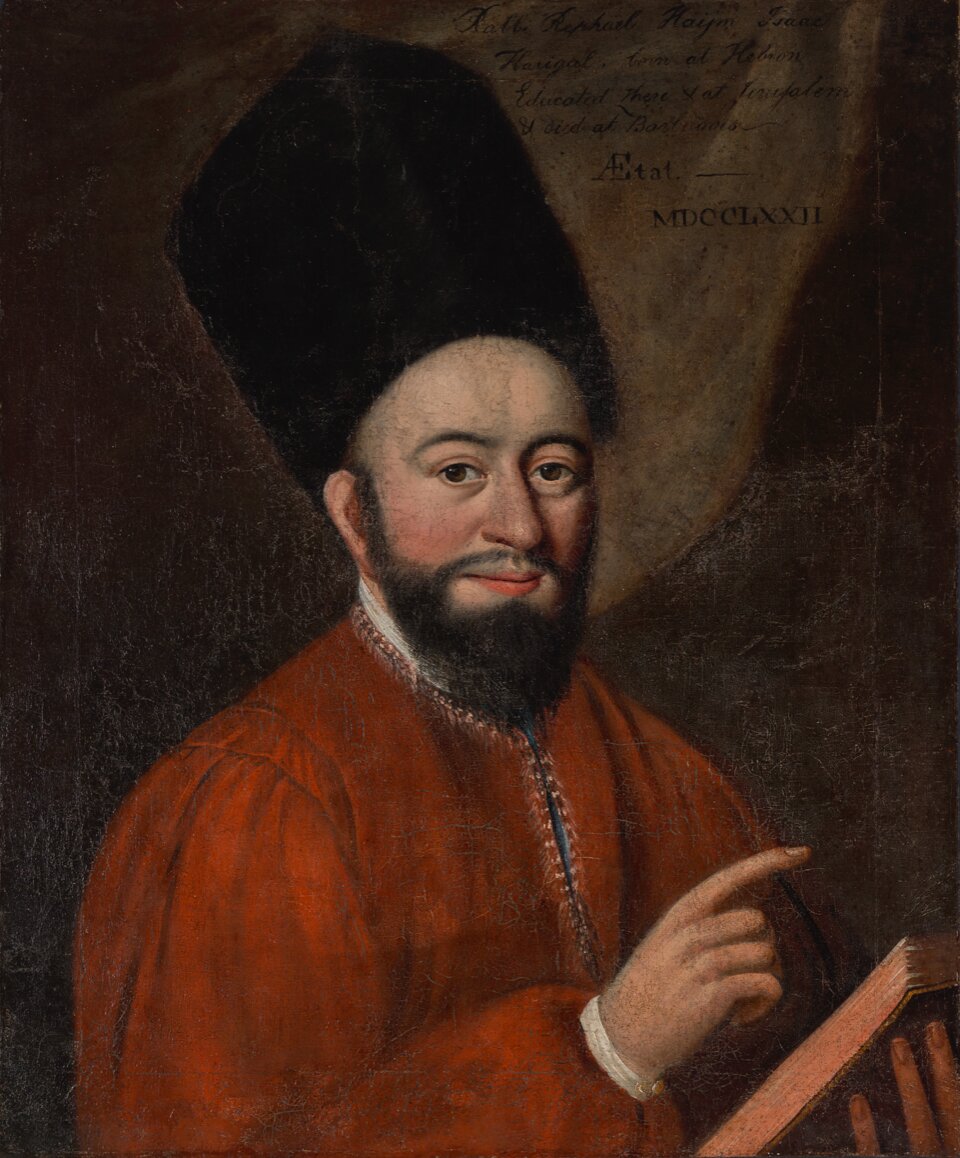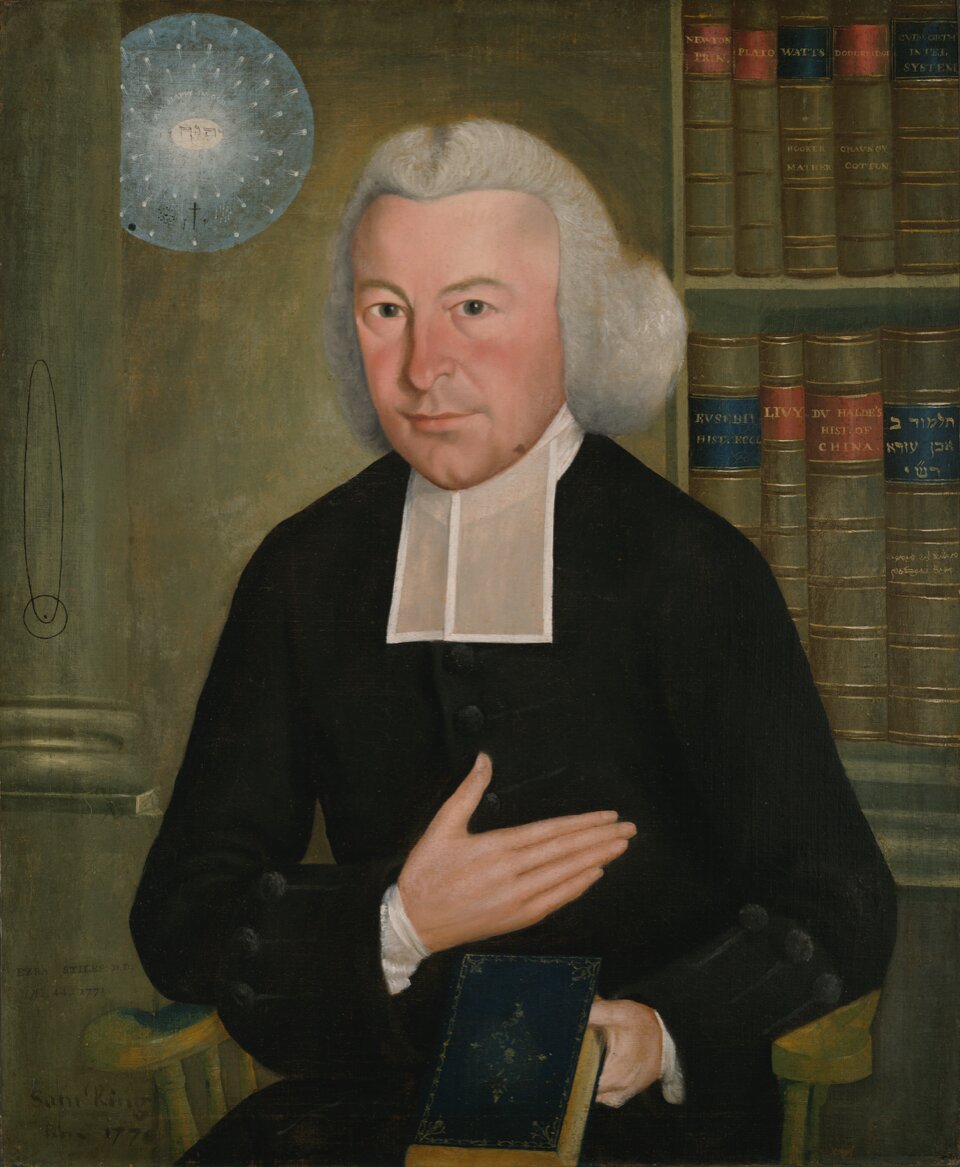Rabbi’s talk delved into U.S., local Jewish history through paintings
NEWPORT – On Aug. 6, Rabbi Meir Soloveichik spoke about“Two Paintings at Yale, the Jewish History of Newport” for an audience of about 60 people gathered at the Newport Historical Society.
Soloveichik is the senior rabbi at Congregation Shearith Israel, in New York City, and an assistant professor of Judaic studies at Yeshiva University. The event was sponsored by Shearith Israel and a new congregation, Ahavath Israel, of Newport. It was Ahavath Israel’s first public event.
Rabbi Soloveichik started his talk by presenting the painting “The Declaration of Independence, July 4, 1776,” by John Trumbull. A larger version hangs in the rotunda of the United States Capitol, and it’s also on the back of $2 bills.
In the painting, Jefferson seems to be the center of attention, but Soloveichik warned: “Let’s be careful not to let our eyes deceive us.”
Jefferson is taller than John Adams, and his image is more detailed, but it is Adams who is in the exact center of the picture. Adams was a workhorse during the American struggle for independence, from fighting the Stamp Act of 1765 to providing the reasoning for independence and getting the Declaration of Independence passed, to mention a few things.
While praising Adams and Jefferson, Soloveichik also called attention to their foibles, particularly Adam’s vanity. But he also pointed out that Adams and Jefferson were intellectuals and politicians, a combination that is rare in today’s America.
In terms of religion, Jefferson was a deist who believed that God is not active in the world he created. To Jefferson, he said, ancient Israel was “a nasty sect, which had presented for the object of their worship a being of terrific character, cruel, vindictive, capricious and unjust.”
Soloveichik said Adams was more tolerant, “... the Hebrews have done more to civilize men than any other nation. If I were an atheist, and believed in blind eternal fate, I should still believe that fate had ordained the Jews to be the most essential instrument for civilizing the nations.
“If I believed ... that all is ordered by chance, I should believe that chance had ordered the Jews to preserve and to propagate to all mankind the doctrine of a supreme intelligent, wise, almighty sovereign of the universe, which I believe to be the great essential principle of all morality, and consequently of all civilization.”
The American Revolution, said Rabbi Soloveichik, was a union between religion and reason.
The second painting Soloveichik presented was a portrait of Ezra Stiles by Samuel King. Stiles was a Congregational minister in Newport, and his diary has many references to the local Jewish community. In 1778, he became president of Yale.
The portrait includes a disc on the wall with the Hebrew letters for God in the center, and a bookcase with Hebrew titles of the Babylonian Talmud, Ibn Ezra and Rashi.
Then Soloveichik revealed a surprise third painting: A portrait of Rabbi Raphael Haijm Isaac Karigal (1733–1777), also by Samuel King and commissioned by Stiles. Karigal was a Talmud scholar who studied in Safed and Jerusalem. He traveled to America, including the West Indies, New York, Philadelphia and Newport. Stiles studied with Karigal in Newport.
After Rabbi Karigal’s death, in Barbados, Stiles asked merchant Aaron Lopez to send Karigal’s portrait from Newport to New Haven, Connecticut, the home of Yale University.
In his diaries, Stiles wrote that his interest in Judaism was to learn about Christianity. Rabbi Soloveichik said that after encountering Karigal in Newport, Stiles took his interest to a higher level, even to the extent that his children recited the Shema!
After the talk and a snack break, Shearith Israel leader Louis Solomon led an upbeat discussion about the relationship between Shearith Israel and Ahavath Israel.
AARON GINSBURG lives in Stoughton, Massachusetts, and blogs at jewishnewport.blogspot.com.











